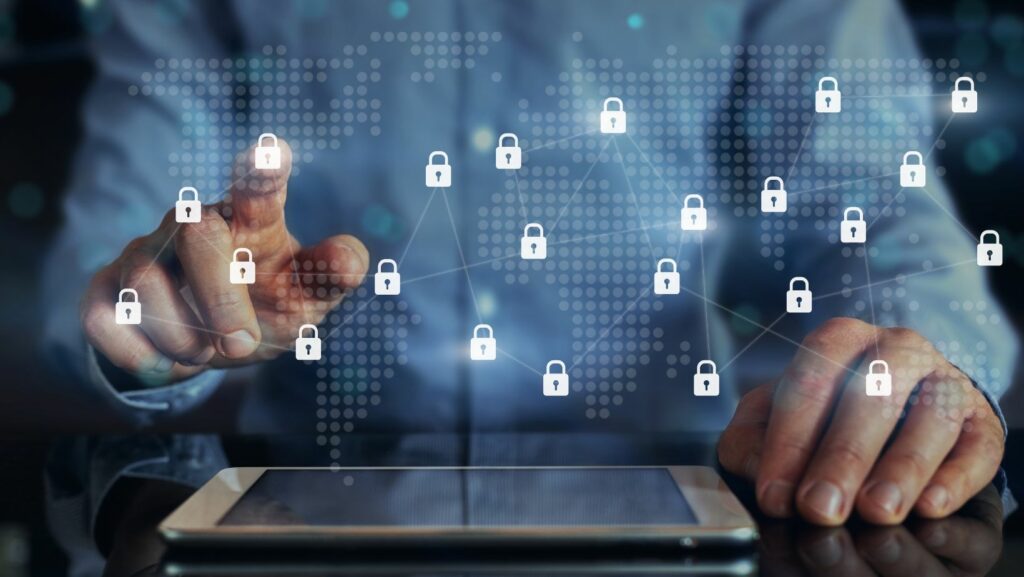Key Takeaways
- Understanding the Cybersecurity Ecosystem: The cybersecurity ecosystem is a complex network of technologies, processes, and collaborations aimed at protecting sensitive information from evolving cyber threats.
- Key Technologies: Firewalls, intrusion detection systems, and advanced solutions like AI play vital roles in detecting and mitigating security threats within networks.
- Collaboration is Essential: Strong partnerships between government agencies and private entities enhance threat intelligence and improve incident response capabilities.
- Importance of Standards and Regulations: Compliance with frameworks like the NIST Cybersecurity Framework and regulations such as GDPR and HIPAA is crucial for managing cybersecurity risks and ensuring data protection.
- Ongoing Education and Training: Continuous training initiatives raise awareness about cybersecurity risks, empowering employees to recognize and combat threats like phishing and social engineering.
- Emerging Trends: Technologies such as AI and the shift towards Zero Trust architectures are transforming how organizations approach cybersecurity, promising enhanced protection and reduced vulnerabilities.
In today’s digital landscape, the cybersecurity ecosystem plays a crucial role in safeguarding sensitive information and maintaining trust. As cyber threats evolve, organizations must navigate a complex web of technologies, processes, and stakeholders designed to protect their assets. Understanding this ecosystem is essential for anyone looking to bolster their defenses against potential breaches.
From firewalls and intrusion detection systems to the collaboration between government agencies and private sectors, the cybersecurity landscape is multifaceted. Each component works in tandem to create a robust defense mechanism. By exploring the intricacies of this ecosystem, individuals and businesses can better equip themselves to face the ever-growing challenges of cyber threats.
Cybersecurity Ecosystem
The cybersecurity ecosystem comprises a complex network of components designed to safeguard digital information and infrastructures. This ecosystem encompasses various entities, including individuals, organizations, technologies, and policies.
- Technologies
Technologies like firewalls, intrusion detection systems, and antivirus software protect networks from threats. Advanced solutions such as artificial intelligence and machine learning enhance threat detection and response.
- Processes
Processes include risk assessment, incident response, and continuous monitoring. Regular updates and patch management ensure systems remain secure against vulnerabilities.
- Collaborations
Collaborations between government agencies and private companies strengthen security postures. Public-private partnerships facilitate information sharing, enhancing threat intelligence and response strategies.
- Standards and Regulations
Standards, such as the NIST Cybersecurity Framework, provide guidelines for managing cybersecurity risks. Compliance with regulations like GDPR and HIPAA ensures organizations maintain data privacy and protection.
- Education and Awareness
Training programs raise awareness about cybersecurity threats and best practices. Educated users play a critical role in defending systems against social engineering and phishing attacks.
Understanding these components underscores the mesh of defenses vital for protecting sensitive information. Through comprehension and collaboration within the cybersecurity ecosystem, organizations reinforce their resilience against ever-evolving cyber threats.
Key Components of the Cybersecurity Ecosystem
The cybersecurity ecosystem comprises several critical components that work together to defend against threats. Understanding these elements enhances the ability to create a robust security posture.
Technologies Involved
 Firewalls – Firewalls act as barriers between trusted networks and untrusted ones. They monitor incoming and outgoing traffic, blocking unauthorized access.
Firewalls – Firewalls act as barriers between trusted networks and untrusted ones. They monitor incoming and outgoing traffic, blocking unauthorized access.- Intrusion Detection Systems (IDS) – IDS tools monitor networks for signs of malicious activities. They alert administrators about potential breaches, allowing for quicker responses.
- Encryption Tools – Encryption secures data by converting it into a format unreadable without a decryption key. This protects sensitive information during storage and transmission.
- Antivirus Software – Antivirus solutions detect and remove malware. Regular updates ensure that these programs effectively combat emerging threats.
- Artificial Intelligence (AI) Solutions – AI enhances threat detection by analyzing patterns and anomalies. Machine learning algorithms improve response times by adapting to new threats.
Human Factors
- Training Programs – Ongoing training educates employees about cybersecurity risks, including phishing and social engineering. This awareness fosters a security-conscious culture.
- Insider Threats – Employees, intentionally or unintentionally, can pose risks. Regular monitoring and support minimize the impact of insider threats.
- Incident Response Teams – Designated teams respond to security incidents. They develop protocols for managing breaches and ensuring prompt recovery.
- Roles and Responsibilities – Clearly defined roles within an organization streamline response efforts. Assigning specific responsibilities ensures accountability during incidents.
- NIST Cybersecurity Framework – The National Institute of Standards and Technology provides guidelines for improving cybersecurity risk management. Organizations adopt its principles to enhance protection.
- GDPR Compliance – The General Data Protection Regulation mandates data protection for EU citizens. Compliance helps organizations avoid substantial fines while ensuring user privacy.
- HIPAA Regulations – The Health Insurance Portability and Accountability Act outlines requirements for safeguarding healthcare information. Compliance is crucial for healthcare organizations wanting to protect patient data.
- ISO 27001 Standards – International Organization for Standardization’s ISO 27001 certifies organizations’ information security management systems. Adopting this standard demonstrates commitment to cybersecurity best practices.
Challenges in the Cybersecurity Ecosystem
The cybersecurity ecosystem faces numerous challenges that hinder effective protection against cyber threats. Key issues include an evolving threat landscape and a significant skills gap in cybersecurity.
Evolving Threat Landscape
 The threat landscape constantly evolves, with cybercriminals employing advanced tactics like ransomware, phishing, and distributed denial-of-service (DDoS) attacks. These threats become more sophisticated as attackers use artificial intelligence and machine learning to circumvent security measures. Organizations must adapt to these changing threats by implementing proactive security strategies, continuously updating software, and employing threat intelligence. Regular vulnerability assessments and penetration testing allow companies to identify and address weaknesses before they become significant vulnerabilities.
The threat landscape constantly evolves, with cybercriminals employing advanced tactics like ransomware, phishing, and distributed denial-of-service (DDoS) attacks. These threats become more sophisticated as attackers use artificial intelligence and machine learning to circumvent security measures. Organizations must adapt to these changing threats by implementing proactive security strategies, continuously updating software, and employing threat intelligence. Regular vulnerability assessments and penetration testing allow companies to identify and address weaknesses before they become significant vulnerabilities.
Skills Gap in Cybersecurity
The cybersecurity field suffers a considerable skills gap, with thousands of unfilled positions across various sectors. The demand for cybersecurity professionals outpaces the available talent, causing delays in incident response and security implementations. Educational institutions and training programs must emphasize practical skills and certifications to prepare the workforce effectively. Organizations can also invest in upskilling current employees and fostering a culture of cybersecurity awareness. Collaboration between private sectors and educational institutions plays a crucial role in developing a skilled workforce capable of addressing the complexities of modern cyber threats.
The Role of Collaboration
Collaboration plays a critical role in the cybersecurity ecosystem, enhancing defenses and creating a robust response structure. Key partnerships and platforms facilitate the exchange of vital information to combat cyber threats effectively.
Public-Private Partnerships
Public-private partnerships (PPPs) enhance cybersecurity by fostering cooperation between government entities and private organizations. These partnerships focus on aligning goals to protect critical infrastructure. They encourage sharing insights on vulnerabilities and best practices, which equips both sectors to respond to threats more effectively. Programs like the Cybersecurity Information Sharing Act (CISA) provide legal frameworks for sharing threat intelligence without fear of liability. Partnerships enable the development of joint training programs and simulate response exercises, preparing teams for real-world incidents.
Information Sharing Platforms
Information sharing platforms, such as the Cyber Threat Exchange (CTE) and Information Sharing and Analysis Centers (ISACs), facilitate collaboration between various stakeholders. These platforms collect and disseminate data on emerging threats, vulnerabilities, and attacks, providing members with actionable insights. By participating, organizations can respond proactively to threats and contribute to a collective defense strategy. Such platforms enhance situational awareness and create a community-driven approach to cybersecurity, aligning efforts across industries to address cyber risks comprehensively.
Future Trends in the Cybersecurity Ecosystem
Emerging technologies and strategies continually reshape the cybersecurity landscape. Key trends signify a transformative approach to safeguards and defense mechanisms.
Artificial Intelligence and Cybersecurity
Artificial intelligence (AI) enhances cybersecurity defenses significantly. Machine learning algorithms analyze vast amounts of data to detect anomalies rapidly. These technologies improve threat detection rates, enabling faster incident response. AI-driven tools automate repetitive tasks, reducing human error and freeing professionals to focus on complex issues. Cybersecurity platforms integrating AI adapt dynamically to evolving threats, providing organizations with more robust protection. Additionally, predictive analytics informs risk assessment processes, improving the proactive measures organizations can implement.
The Shift to Zero Trust Architectures
Zero Trust architecture fundamentally changes how organizations approach security. This model operates on the principle that no user or device is inherently trusted, regardless of location. Continuous verification of identities and access permissions occurs at every stage of interaction. Implementing multi-factor authentication (MFA) and user behavior analytics helps to reinforce security. Organizations adopting a Zero Trust framework limit potential vulnerabilities and reduce the impact of breaches. The approach promotes rigorous access controls, ensuring that only authorized personnel can access sensitive information, which enhances overall security posture.
Constant Vigilance and Adaptation
The cybersecurity ecosystem is a dynamic and multifaceted landscape that requires constant vigilance and adaptation. As threats evolve and become more sophisticated, the need for robust defenses and collaborative efforts becomes paramount. Organizations must prioritize education and training to equip their teams with the skills necessary to navigate this complex environment.
Embracing emerging technologies like artificial intelligence and adopting frameworks such as Zero Trust can significantly enhance security measures. By fostering partnerships between government and private sectors, stakeholders can share critical information and strategies to bolster defenses. Ultimately, a proactive and informed approach is essential for safeguarding sensitive information and maintaining trust in the digital realm.

